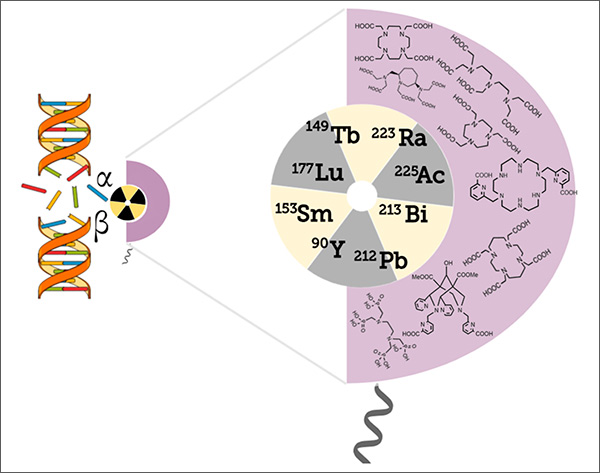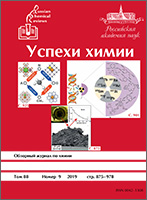|
This article is cited in 16 scientific papers (total in 16 papers)
Cationic radionuclides and ligands for targeted therapeutic radiopharmaceuticals
B. V. Egorovaa, O. A. Fedorovaab, S. N. Kalmykova
a Lomonosov Moscow State University, Faculty of Chemistry
b A. N. Nesmeyanov Institute of Organoelement Compounds of the Russian Academy of Sciences, Moscow

Abstract:
This review considers the already used and potential $\alpha$- and $\beta$-emitting cationic radionuclides for targeted radionuclide therapy. Recent results of laboratory, preclinical and clinical applications of these radionuclides are discussed. As opposed to $\beta$-emitters, which are already used in nuclear medicine, $\alpha$-emitters involved in targeted radiopharmaceuticals were subjected to clinical trials only recently and were found to be therapeutically effective. The review summarizes recent trends in the development of ligands as components of radiopharmaceuticals addressing specific features of short-lived cationic radionuclides applied in medicine. Despite a steadily growing number of chelating ligands, 1,4,7,10-tetraazacyclododecane-1,4,7,10-tetraacetic acid (DOTA) and diethylenetriaminepentaacetic acid (DTPA) remain the most widely used agents in nuclear medicine. The drawbacks of these compounds restrict the application of radionuclides in medicine. Variations in the macrocycle size, the introduction and modification of substituents can significantly improve the chelating ability of ligands, enhance stability of radionuclide complexes with these ligands and eliminate the influence of ligands on the affinity of biological targeting vectors.
The bibliography includes 189 references.
Received: 27.03.2019
Citation:
B. V. Egorova, O. A. Fedorova, S. N. Kalmykov, “Cationic radionuclides and ligands for targeted therapeutic radiopharmaceuticals”, Usp. Khim., 88:9 (2019), 901–924; Russian Chem. Reviews, 88:9 (2019), 901–924
Linking options:
https://www.mathnet.ru/eng/rcr4264https://doi.org/10.1070/RCR4890 https://www.mathnet.ru/eng/rcr/v88/i9/p901
|


| Statistics & downloads: |
| Abstract page: | 152 |
|






 Contact us:
Contact us: Terms of Use
Terms of Use
 Registration to the website
Registration to the website Logotypes
Logotypes








 Citation in format
Citation in format 
